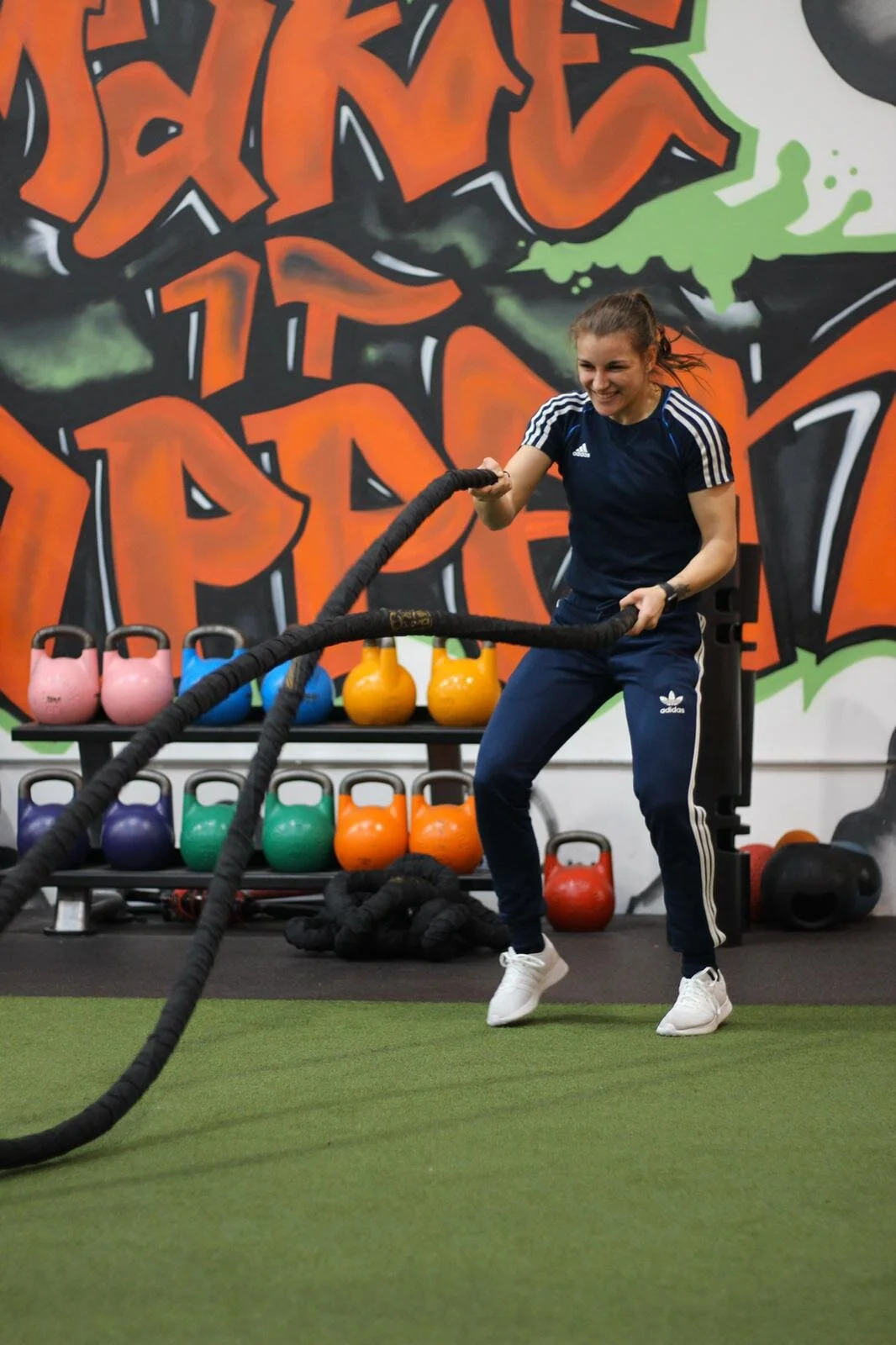This Article is Sponsored by Studio 9 Fitness. The Premier Sports Performance Facility in Wokingham, Berkshire.
Whether you are aiming to improve your performance in a sport or you just want to reap the benefits of exercise, physical conditioning exercises can help to improve your performance. Conditioning generally includes aerobic, anaerobic, strength and flexibility exercise. The specific training you choose will vary depending on your goals.
Conditioning is the physical exercise of low to high intensity that utilises the aerobic and anaerobic energy-generating processes.
Aerobic
Aerobic means relating to, involving, or requiring oxygen and refers to the use of oxygen to adequately meet energy demands during exercise via aerobic metabolism. Generally, light-to-moderate intensity activities that are sufficiently supported by aerobic metabolism can be performed for extended periods of time. Examples of low-intensity aerobic conditioning include mid to long-distance running, swimming, cycling, walking etc. When you are exercising, your heart rate will increase, your breathing will become quicker and your body temperate will rise. These are your body’s responses to enable your heart to pump blood through your vessels to deliver oxygen to the muscles to keep you moving and sustaining the activity for more than just a few minutes. This is aerobic conditioning exercise (also known as "cardio"), which is any activity that you can sustain for more than just a few minutes while your heart, lungs and muscles are working and using oxygen.
Anaerobic
High-intensity conditioning is not technically aerobic exercise because it requires an energy breakdown from stores rather than oxygen supply. Examples of anaerobic exercise include weight lifting, sprinting, and jumping; any exercise that consists of short exertion, high-intensity movement, is an anaerobic exercise. Anaerobic conditioning is used by athletes in non-endurance sports to promote strength, speed and power; and by bodybuilders to build muscle mass. Muscle energy systems trained using anaerobic exercise develop differently compared to aerobic exercise, leading to greater performance in short duration, high-intensity activities, which last from mere seconds to up to about 2 minutes.
Which type?
It is important to incorporate both methods of conditioning in training programmes because they both provide different benefits and results. However, any programme should always be specific to the goal, so dependent on whether your sport is endurance based or power/strength based, you would need to incorporate more of one type of conditioning than the other. For example, boxers would benefit from incorporating more anaerobic conditioning into their training programme – including short intervals, sprints, plyometric training and weight lifting – because this type of training will mimic the high-intensity anaerobic energy requirements of their sport. On the other hand, marathon runners would benefit from predominantly aerobic conditioning in order to train the cardiovascular system and increase their lung capacity for better performance. This would include long-distance running, swimming and cross-training at a much lower intensity than a boxer’s training programme.
Conditioning training is beneficial for everyone, not just athletes. The current recommendations for overall cardiovascular health are:-
· At least 30 minutes of moderate-intense aerobic activity 5 days per week for a total of 150 minutes
· At least 25 minutes of vigorous aerobic activity at least 3 days per week for a total of 75 minutes; or a combination of moderate and vigorous intensity aerobic activity
· Moderate - to high-intensity muscle strengthening activity at least 2 days per week for additional health benefits
· For lowering blood pressure and cholesterol: an average 40 minutes of moderate to vigorous intensity aerobic activity 3 or 4 times per week
Benefits of cardiovascular exercise:
· Reduction in body fat
· Strengthens the most important muscle in our body – the heart
· Lowers blood pressure and cholesterol
· Increased bone density – especially when combined with weight-bearing exercise
· Reduced stress and depression
· Better sleep
· Maintain muscle strength into old age
· Reduced fatigue
· Reduced risk of heart disease
· Strengthens the lunges
· Increase life expectancy
· Improved immune system
Aerobic training programme design variables:
1. Exercise mode - referring to the specific activity performed by the athlete
2. Training frequency - refers to the number of sessions done per day/per week
3. Training intensity - refers to how hard you’ll be working
4. Exercise duration - refers to the length of time of the training session
5. Exercise progression - refers to making the programme harder over a period of time i.e. the overload principle
Anaerobic training programme design variables:
1. Repetition intensity/duration – usually hard, near-maximal and maximal intensities
2. Work to recovery interval ratio – recommended 1 to 4, then as the athlete progresses tapering to 1 to 2 or 1 to 1.5 work to recovery time ratio
3. Total exercise volume – refers to total number of reps, sets, circuits etc
4. Training frequency - refers to the amount of rest days per week
5. Programme duration – refers to the length of each specific training programme and the time expectancy to see changes from anaerobic training
6. Value of resistance training – refers to the phase of each exercise movement specific to the athlete’s activity i.e. concentric and eccentric phases
7. Training progression – refers to periodisation
We are Built, Not Born. We get what we work for, not what we wish for!
Laura Pain
GB Boxer, Laura Pain Going Through a Conditioning Session.

